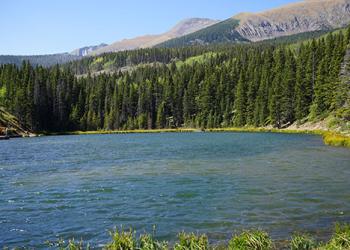Water, Air and Soil
Water, air and soil, when combined with the organisms they support, form ecosystems. These ecosystems, when in good condition, provide numerous benefits to the nation including clean water and air, abundant food and fiber, and healthy ecosystems that support local communities. The Forest Service carries out research on water, soil and air to help meet its mission of sustaining the health, diversity and productivity of the nation's forests and grasslands to meet the needs of present and future generations.
Many of the national forests and grasslands were created as part of a national effort in the late 19th and early 20th centuries to protect and restore soil and water resources and associated forest and grassland ecosystems. Today, about half of the U.S. population relies on forested lands to capture and filter their drinking water while new challenges confront resource managers working to sustain the long-term integrity of these lands and the resources they provide.
Water

Did you know the Forest Service carries out research on water, soil and air to help meet its mission of sustaining the health, diversity and productivity of the nation's forests and grasslands to meet the needs of present and future generations?
Air

Did you know air pollution can impair visibility, harm human health, injure trees and other plants, acidify or cause unnatural fertilization of streams and lakes, leach nutrients from soils and degrade cultural resources like archeological sites and historical buildings?
Soil

Did you know healthy soils are key to healthy forest ecosystems that promote water filtration, reduce wind and water erosion, enhance plant and soil biodiversity, reduce the incidence of insects and diseases and contribute to clean and abundant water supplies?



